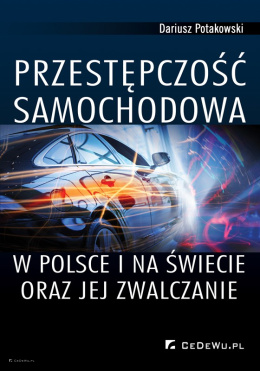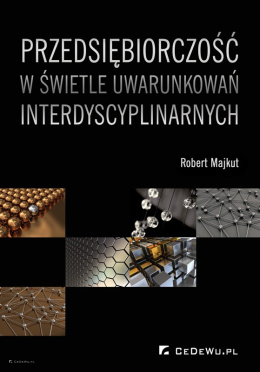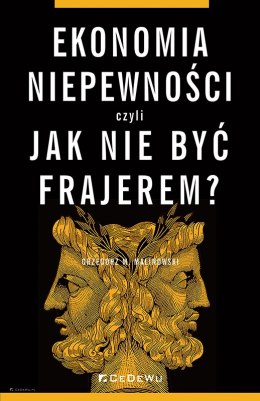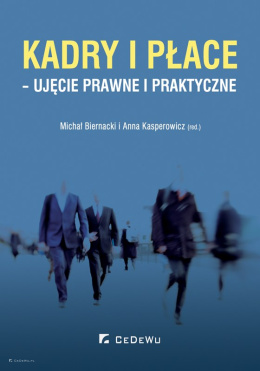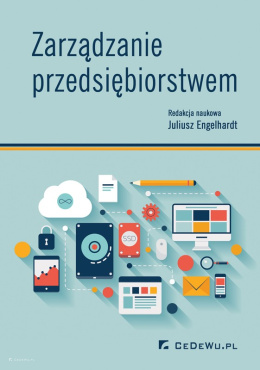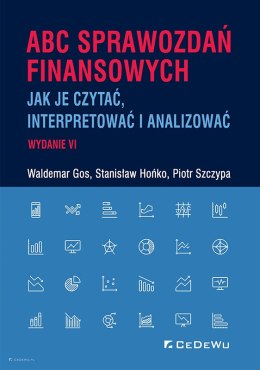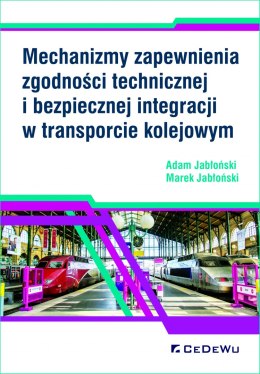-
Shopping cart is empty
-
x

-
Shopping cart is empty
-
x
- Categories
-
Railway Safety Culture Model. Theory and Practical Implications
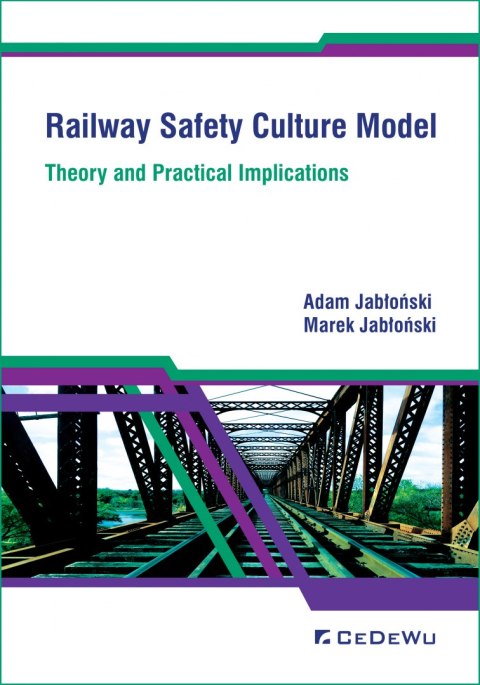
The content, concepts, methods and techniques presented in the monograph are holistic, as the issue of railway traffic safety is holistic. The authors referred to numerous literature sources and practical conditions to thoroughly explain the determinants of the mechanisms of shaping safety culture in rail transport. In the authors' opinion, this work fills the knowledge gap in the place and role of safety culture as well as human and organizational factors in the processes of improving safety management systems in rail transport. It also analyzes the impact of technical aspects on the behavior of employees in the railway system. In particular, in the context of technical solutions, it refers to the effective use of railway traffic control devices and the principles of rail traffic control, assessed in terms of human and organizational factors. It should help managers improve the quality of railway undertaking management. Zaprezentowane w monografii treści, koncepcje, metody i techniki
| Shipping within | 24 hours |
| The bar code | |
| ISBN | 978-83-8102-434-1 |
| EAN | 9788381024341 |
Zaprezentowane w monografii treści, koncepcje, metody i techniki mają charakter holistyczny, gdyż holistyczne jest zagadnienie bezpieczeństwa ruchu kolejowego. Autorzy sięgnęli do bardzo wielu źródeł literaturowych oraz uwarunkowań praktycznych, aby w sposób dogłębny wyjaśnić uwarunkowania mechanizmów kształtowania kultury bezpieczeństwa w transporcie kolejowym. Praca ta wypełnia według autorów lukę wiedzy w zakresie miejsca i roli kultury bezpieczeństwa oraz czynnika ludzkiego i organizacyjnego w procesach doskonalenia systemów zarządzania bezpieczeństwem w transporcie kolejowym. Analizuje także wpływ aspektów technicznych na kształtowanie zachowań pracowników w systemie kolejowym. W szczególności w kontekście rozwiązań technicznych odnosi się do efektywnego wykorzystania urządzeń sterowania ruchem kolejowym i zasad sterowania ruchem kolejowym, ocenianych z punktu widzenia czynnika ludzkiego i organizacyjnego. Posłużyć powinna menadżerom w podwyższaniu jakości zarządzania przedsiębiorstwami kolejowymi.
List of abbreviations 9
Introduction 11
Chapter 1
The scope and methodology of research into the mechanisms of shaping safety culture in rail transport 17
1.1. The general outline of scientific discussion 18
1.2. Theoretical assumptions 19
Chapter 2
Specific conditions for the functioning of entities in the rail sector 27
2.1. A railway enterprise as a High Reliability Organization 29
2.2. The place and role of railway infrastructure managers and railway undertakings in shaping safety culture in rail transport 35
2.3. The place and role of railway siding users in shaping safety culture in rail transport 37
2.4. The place and role of entities in charge of maintenance of railway vehicles (ECMs) in shaping safety culture in rail transport 39
Chapter 3
Safety management systems in rail transport and the functioning of railway enterprises 43
3.1. Safety management systems in railway enterprises and their safety culture 46
3.2. Risk management in railway enterprises and safety culture 56
3.3. Change and innovation management and shaping the safety culture of railway enterprises 61
Chapter 4
Safety culture as a specific type of the organizational culture of railway enterprises - assumptions 69
4.1. Safety culture in railway enterprise management 69
4.2. Technical safety culture in railway enterprise management 74
4.3. Occupational safety culture in railway enterprise management 76
4.4. Behavioral safety culture in railway enterprise management 78
Chapter 5
Safety culture as a specific type of the organizational culture of railway enterprises - operationalization 81
5.1. Safety culture and aspects of the workplace ergonomics in railway enterprises 81
5.2. OHS safety culture and the assumptions of OHS management systems 86
5.3. The concept of Just Culture and conditions of rail transport 89
5.4. Measurement of the safety culture of railway enterprises 92
Chapter 6
The place and role of a person in railway enterprises 97
6.1. Personnel competency management and the organizational culture of railway enterprises 97
6.2. A human factor in railway enterprises - key aspects 110
6.3. Awareness, commitment and motivation as the crucial attributes of the personnel of railway enterprises critical to railway safety 122
6.4. An organizational factor, occupational stress and the culture of the technical and occupational safety of railway enterprises 124
Chapter 7
Railway traffic control systems and railway traffic management
versus human and organizational factors 129
7.1. Human and organizational factors in managing the configuration of railway technical systems 129
7.2. Human and organizational factors in the analysis of accidents in the rail transport sector 138
7.3. Human and organizational factors in railway traffic control and management systems 140
Chapter 8
The operationalization of management principles through safety culture in rail transport in terms of systems and processes - selected implementation solutions 145
8.1. An original model of shaping safety culture in rail transport 146
8.2. An original model of measuring safety culture in rail transport 149
8.3. The course of the management of safety culture processes and human and organizational factors 151
Conclusion 167
References 183
List of figures 195
List of tables 196
About the authors 197
Associate Professor Adam Jabłoński, PhD
Vice President of the Management Board of OTTIMA plus Sp. z o.o. based in Katowice. President of the Management Board of the Southern Railway Cluster.
University lecturer, director of the Institute of Management and Quality Sciences at WSB University in Poznań.
A graduate of the Railway Technical Secondary School in Sosnowiec, specializing in Automation of Railway Traffic Control; a graduate of the Silesian University of Technology, Faculty of Transport, specializing in Traffic Engineering. Postdoctoral degree in economic sciences in the field of management science.
Experienced rail industry expert in terms of safety management in rail transport and the maintenance of vehicles and rail infrastructure.
Author of numerous technical and economic analyses and expert opinions on rail transport. Technical Head of the Accredited Inspection Body (ASBO) OTTIMA Plus Sp. z o.o. in the field of safety assessment and inspector in the field of the safe integration of structural and functional subsystems of the Technical Specification for Interoperability. Experienced trainer, manager and contractor of numerous projects related to the construction of modern management methods and concepts and rail transport. Long-term auditor of Management System Certification Bodies in the area of transport. Co-initiator and co-founder of the first Railway Cluster in Poland - the Southern Railway Cluster in Katowice. Member of the Chapter of the international competition in the field of railway innovation - ERCI Innovation Awards as part of the European Network of Clusters - European Railway Clusters Initiative.
Author of many innovative solutions for business and industry as well as numerous monographs, publications, articles and scientific concepts published in Poland and internationally. Co-author of, inter alia, the monograph entitled "The mechanisms of effective safety management in rail transport" which received an award from the President of the Office of Rail Transport in the 4th edition of the "Safety culture in rail transport" competition, and co-author of the monograph "The mechanisms of effective railway siding management". Speaker at numerous scientific and industry conferences and congresses. Initiator of numerous scientific and business ventures.
Associate Professor Marek Jabłoński, PhD
President of the Management Board of OTTIMA plus Sp. z o.o. based in Katowice. President of the Management Board of the Southern Railway Cluster.
University lecturer, director of the Institute of Management and Quality Sciences at WSB University in Poznań.
A graduate of the Railway Technical Secondary School in Sosnowiec, specializing in Automation of Railway Traffic Control; a graduate of the Silesian University of Technology, Faculty of Transport, specializing in Traffic Engineering. Postdoctoral degree in economic sciences in the field of management science.
Experienced rail industry expert in terms of safety management in rail transport and the maintenance of vehicles and rail infrastructure.
Author of numerous technical and economic analyses and expert opinions on rail transport. Head of the Accredited Inspection Body (ASBO) OTTIMA Plus Sp. z o.o. in the field of safety assessment and inspector in the field of the safe integration of structural and functional subsystems of the Technical Specification for Interoperability. Experienced trainer, manager and contractor of numerous projects related to the construction of modern management methods and concepts and rail transport. Long-term auditor of Management System Certification Bodies in the area of transport. Co-initiator and co-founder of the first Railway Cluster in Poland - the Southern Railway Cluster in Katowice. Member of the Technical Committee of the Cooperation of CSM Assessment Bodies - ASBO Cooperation supervised by the European Railway Agency based in Valenciennes, France. Active Member of the European Cluster Network - ERCI - European Railway Clusters Initiative.
Author of many innovative solutions for business and industry as well as numerous monographs, publications, articles and scientific concepts published in Poland and internationally. Co-author of, inter alia, the monograph entitled "The mechanisms of effective safety management in rail transport" which received an award from the President of the Office of Rail Transport in the 4th edition of the "Safety culture in rail transport" competition, and co-author of the monograph "The mechanisms of effective railway siding management". Speaker at numerous scientific and industry conferences and congresses. Initiator of numerous scientific and business ventures.
Reviewed by: Prof. dr hab. Andrzej Chodyński, Andrzej Frycz Modrzewski Krakow University, Thematic editor of the journal Security. Theory and Practice
(...) "The work is a kind of compendium of knowledge of the possibilities of the practical implementation of increasing the level of safety in rail traffic on the European Union market, using the theoretical achievements of management sciences, with emphasis on the importance of safety culture. I think the work is exceptional. Its uniqueness lies in the skillful combination of the elements of management theory and practice with the specific requirements of the railway sector. It integrates the issues of safety culture with the achievements related to current documents at the European Union level, in line with the assumptions of the 4th Railway Package. It should be emphasized that the authors' original model of shaping and measuring safety culture in rail transport has been developed. This innovative model is applicable to railway undertakings at the European level and can also be used to build models of railway undertakings at the national level. The interdisciplinarity of the model fosters the transfer of knowledge and technology in rail transport, emphasizing the need to build a positive safety culture for both railway undertakings and the entire railway system. In its assumptions, this model takes into account both economic and social impacts. This impact results not only from spreading practices or behaviors, but also encourages the exchange of experiences, involving entities operating on the railway market and individual stakeholders. This influence may be manifested in the reaction of institutions responsible for safety in railway traffic, both at the European Union and national levels. It can also refer to the involvement of people dealing with the theory and practice of management in the field of improving safety management systems, influencing development and the increase in interest in this subject." (...).
From Review: Prof. Andrzej Chodyński, PhD Editor of Security. Theory and Practice thematic journal, Andrzej Frycz Modrzewski Krakow University, Poland
(...) „Praca stanowi swoiste kompendium wiedzy o możliwościach praktycznej realizacji podnoszenia poziomu bezpieczeństwa w ruchu kolejowym na rynku Unii Europejskiej z wykorzystaniem dorobku teoretycznego nauk o zarządzaniu, z zaakcentowaniem znaczenia tematyki kultury bezpieczeństwa. Sądzę że praca ma charakter wyjątkowy. Wyjątkowość jej polega na umiejętnym powiązaniu elementów teorii i praktyki zarządzania wobec specyficznych wymagań sektora kolejowego. Wkomponowuje kwestie kultury bezpieczeństwa w dorobek związany z aktualnymi dokumentami na poziomie Unii Europejskiej, wpisując się w założenia tzw. IV Pakietu Kolejowego. Na podkreślenie zasługuje opracowanie autorskiego modelu kształtowania i pomiaru kultury bezpieczeństwa w transporcie kolejowym. Ten innowacyjny model ma zastosowanie do przedsiębiorstw kolejowych na poziomie Europy, może być także wykorzystany do budowy modeli przedsiębiorstw kolejowych na poziomie poszczególnych krajów. Interdyscyplinarność modelu sprzyja transferowi wiedzy i technologii w transporcie kolejowym, akcentując konieczność budowy pozytywnej kultury bezpieczeństwa zarówno przedsiębiorstw kolejowych jak i całego systemu kolejowego. Model ten w swych założeniach uwzględnia wpływ zarówno o charakterze gospodarczym jak i społecznym. Wpływ ten wynika nie tylko z upowszechniania praktyk czy zachowań, ale zachęca do wymiany doświadczeń obejmując swym zasięgiem podmioty funkcjonujące na rynku kolejowym oraz poszczególnych interesariuszy. Wpływ ten może się przejawiać w reakcji instytucji odpowiedzialnych za bezpieczeństwo w ruchu kolejowym zarówno na poziomie Unii Europejskiej jak i krajowym. Może się odnosić także do zaangażowania osób zajmujących się teorią i praktyką zarządzania w zakresie doskonalenia systemów zarządzania bezpieczeństwem, wpływając na rozwój i wzrost zainteresowania tą tematyką."(...).
Z recenzji: Prof. dr hab. Andrzeja Chodyńskiego, Redaktora tematycznego czasopisma Security. Theory and Practice, Andrzej Frycz Modrzewski Krakow University, Poland
Polub nas na Facebooku
